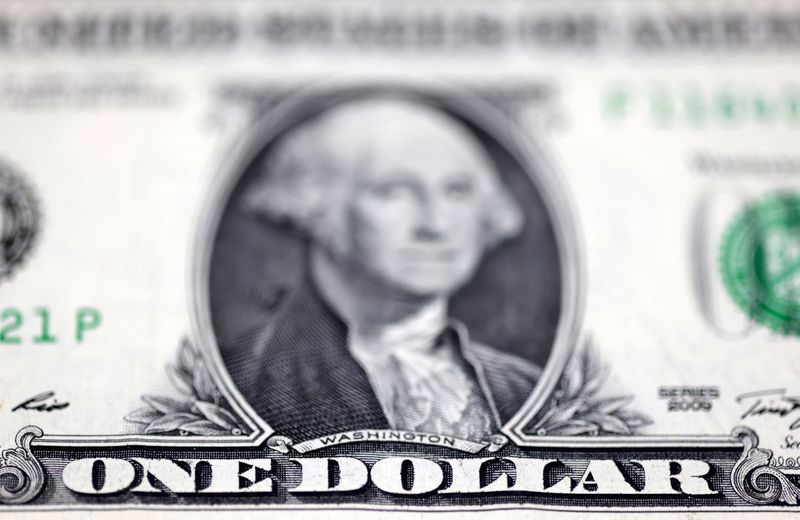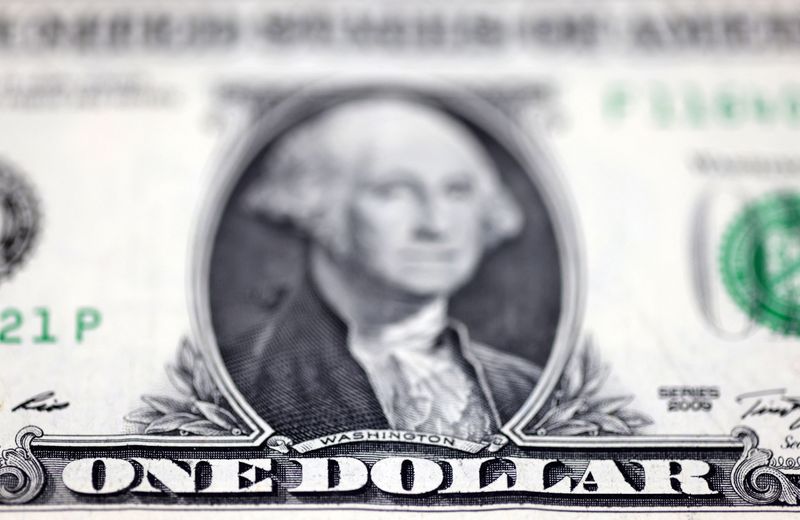Forex
Dollar higher on US business activity boost

By Saqib Iqbal Ahmed
NEW YORK (Reuters) -The dollar rose against the euro on Thursday after data showed U.S. business activity accelerated to the highest level in just over two years in May, suggesting that economic growth picked up half-way through the second quarter.
S&P Global said that its flash U.S. Composite PMI Output Index, which tracks the manufacturing and services sectors, jumped to 54.4 this month. That was the highest level since April 2022 and followed a final reading of 51.3 in April.
A reading above 50 indicates expansion in the private sector.
“The currency action shows the market still responds to strong U.S. economic data in the expected way,” said Marc Chandler, chief market strategist at Bannockburn Global Forex LLC.
“I think the dollar has some more room on the upside,” Chandler said.
Data on Thursday also showed the number of Americans filing new claims for unemployment benefits fell last week, pointing to underlying strength in the labour market that should continue to support the economy.
Federal Reserve officials at their last policy meeting said they still had faith that price pressures would ease at least slowly in coming months, but doubts emerged about whether the current level of interest rates was high enough to guarantee that outcome and “various” officials said they’d be willing to hike borrowing costs again if inflation surged.
“Given the FOMC comments the market is still exaggerating the chances of two rate cuts this year,” Chandler said, noting that the unwinding of rate cut bets would keep the dollar supported in the near term.
The euro was down 0.2% at $1.080525. The common currency rose as high as $1.0861 earlier in the session after the preliminary composite Purchasing Managers’ Index for the currency bloc came in above the 50 level separating growth from contraction for the third month in a row, with even struggling manufacturing showing a recovery.
Better-than-feared economic data for the past few months helped the euro rally in April and early May, and Thursday’s data pushed the currency back towards mid-May’s two-month high of $1.0895.
“The EU PMI figures took a little pressure off of the stagflation theme, but it still feels a little stagflation ‘lite’ if you will, and we need to see more on the growth side there,” Brad Bechtel, global head of FX at Jefferies, said in a note.
The pound slipped 0.2% to $1.2689 against the dollar. Prime Minister Rishi Sunak on Wednesday called a national election, which his Conservatives are widely expected to lose to the opposition Labour Party after 14 years in power. However, sterling options volatility for the period covering the July 4 election did rise. [GBP/]
“The market is fairly confident there’s going to be a Labour government and it’s pretty confident also that the Labour government won’t be that different in terms of fiscal policy, than the current Sunak and (finance minister Jeremy) Hunt mix anyway,” said Jane Foley, head of FX strategy at Rabobank.
The dollar was 0.1% higher against the Japanese currency at 156.91 yen after data showed Japan’s factory activity crept into expansion for the first time in a year in May.
The corporate sector in Japan has been grappling with the weak yen, and nearly half of Japanese firms find the yen’s slide beyond 155 to the dollar harmful to their business, roughly double the percentage of those who see the currency’s weakness as a positive, a Reuters survey showed on Thursday.
The New Zealand dollar slipped 0.1% to $0.60925after data released Thursday showed that retail sales volumes in New Zealand unexpectedly rose, its second day of gains after the Reserve Bank of New Zealand surprised markets on Wednesday by lifting its forecasts for peak interest rates and pushing back when it expects to cut. {AUD/]

Among cryptocurrencies, ether was up 1% at $3,776, after rising as high as $3945.50 its highest since mid-March.
It has been surging amid speculation over the potential approval of U.S. spot exchange-traded funds that would track the world’s second-biggest cryptocurrency.

 Forex3 years ago
Forex3 years agoForex Today: the dollar is gaining strength amid gloomy sentiment at the start of the Fed’s week

 Forex3 years ago
Forex3 years agoUnbiased review of Pocket Option broker

 Forex3 years ago
Forex3 years agoDollar to pound sterling exchange rate today: Pound plummeted to its lowest since 1985

 Forex3 years ago
Forex3 years agoHow is the Australian dollar doing today?

 Cryptocurrency3 years ago
Cryptocurrency3 years agoWhat happened in the crypto market – current events today

 World3 years ago
World3 years agoWhy are modern video games an art form?

 Commodities3 years ago
Commodities3 years agoCopper continues to fall in price on expectations of lower demand in China

 Economy3 years ago
Economy3 years agoCrude oil tankers double in price due to EU anti-Russian sanctions





















